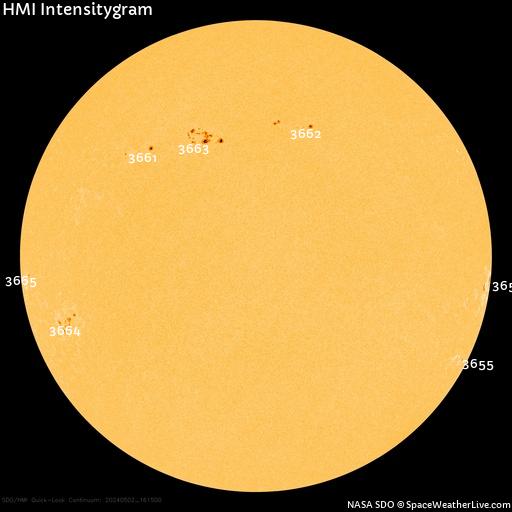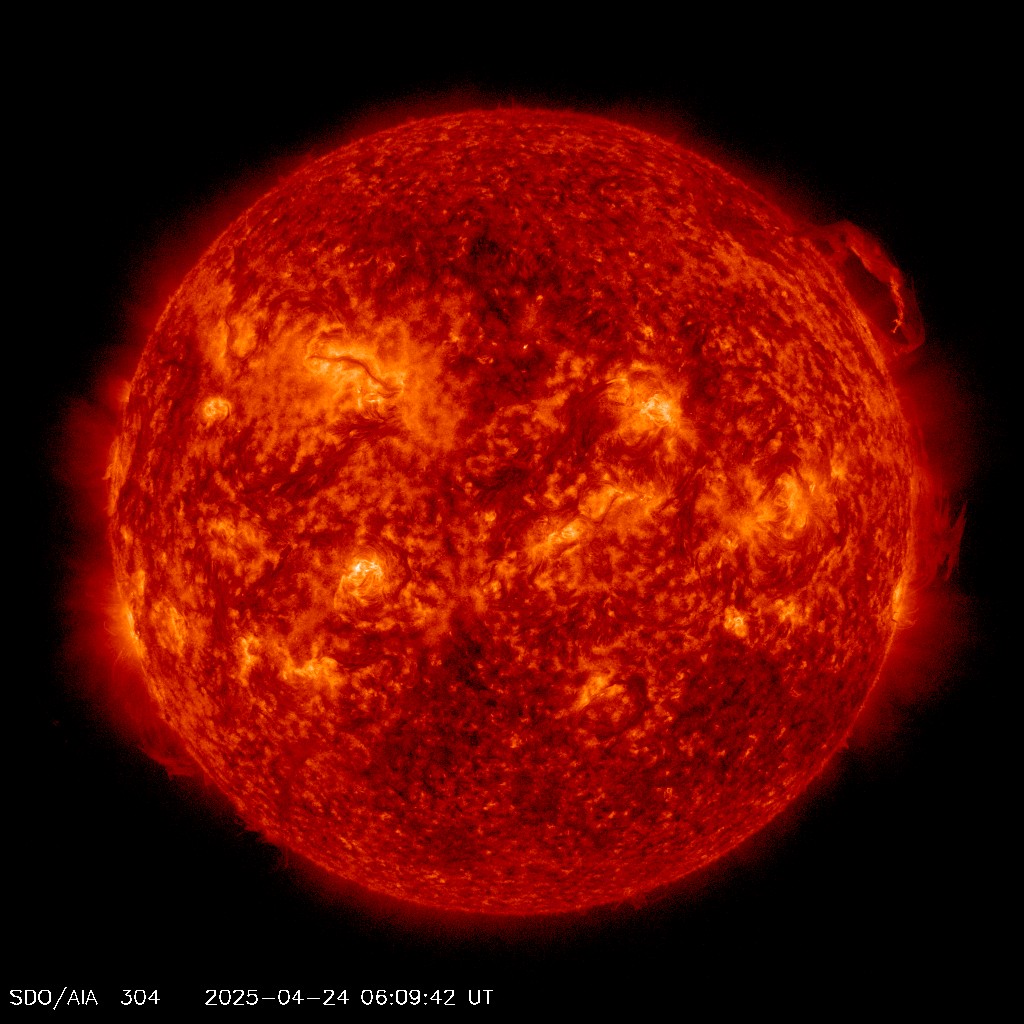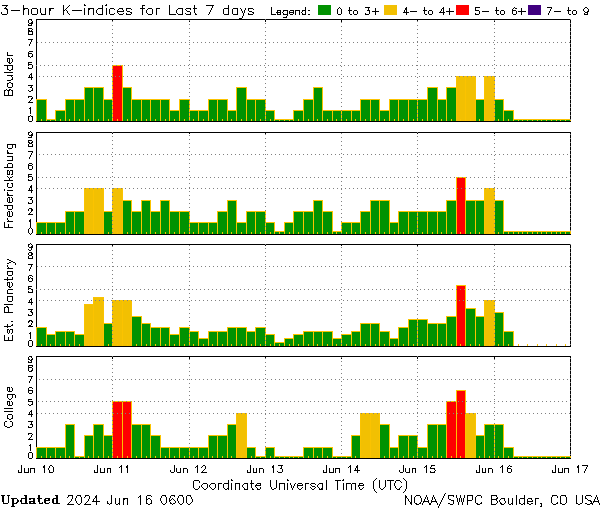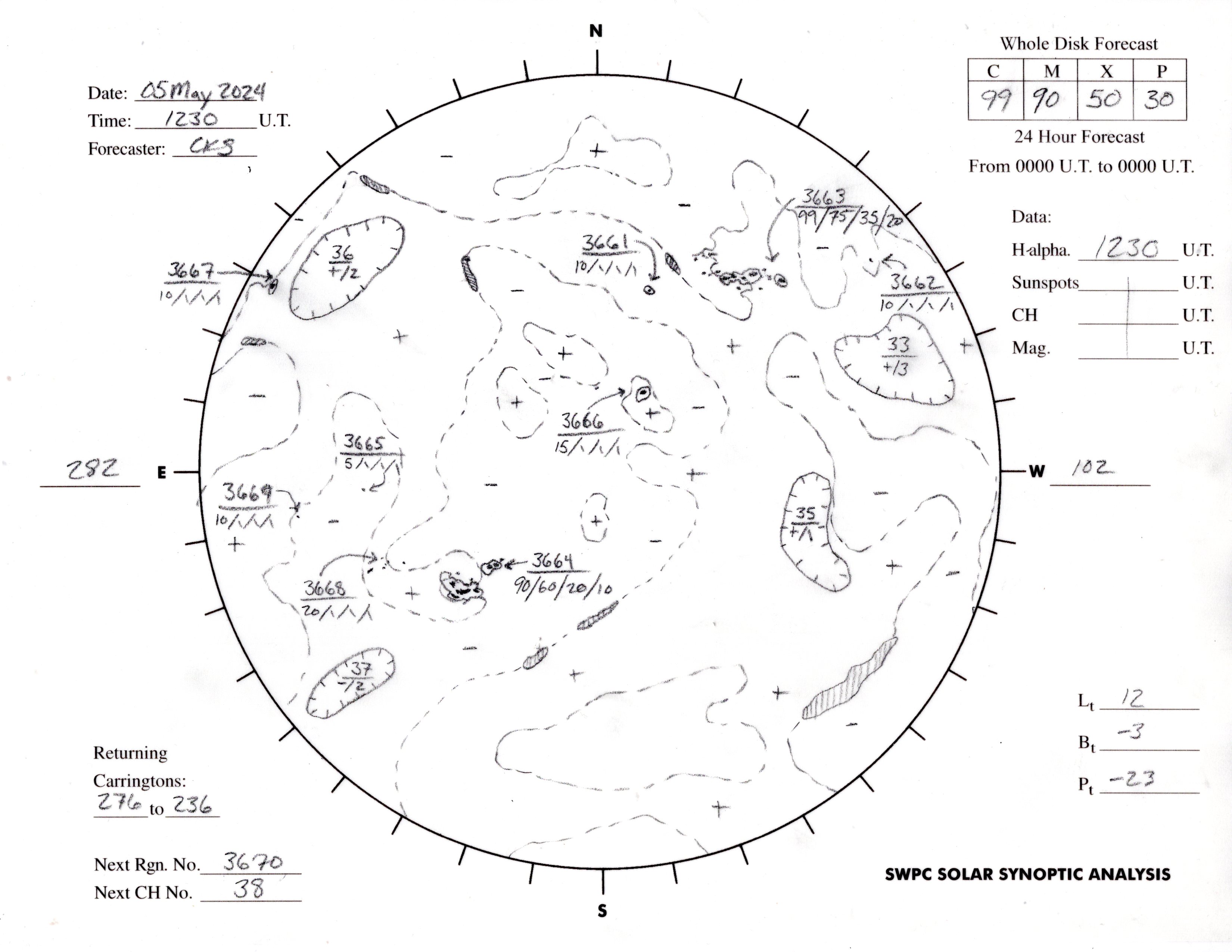Today's Sun
Visit NASA's Solar Dynamics Observatory (SDO) for more images and information.
Sunspots are areas that appear dark on the surface of the Sun. They appear dark because they are cooler than other parts of the Sun’s surface. Solar flares are a sudden explosion of energy caused by tangling, crossing or reorganizing of magnetic field lines near sunspots. Numbers are the current NOAA/SWPC sunspot regions.

Visit NASA's Solar Dynamics Observatory (SDO) for more images and information.
Sunspots are areas that appear dark on the surface of the Sun. They appear dark because they are cooler than other parts of the Sun’s surface. Solar flares are a sudden explosion of energy caused by tangling, crossing or reorganizing of magnetic field lines near sunspots. Numbers are the current NOAA/SWPC sunspot regions.







